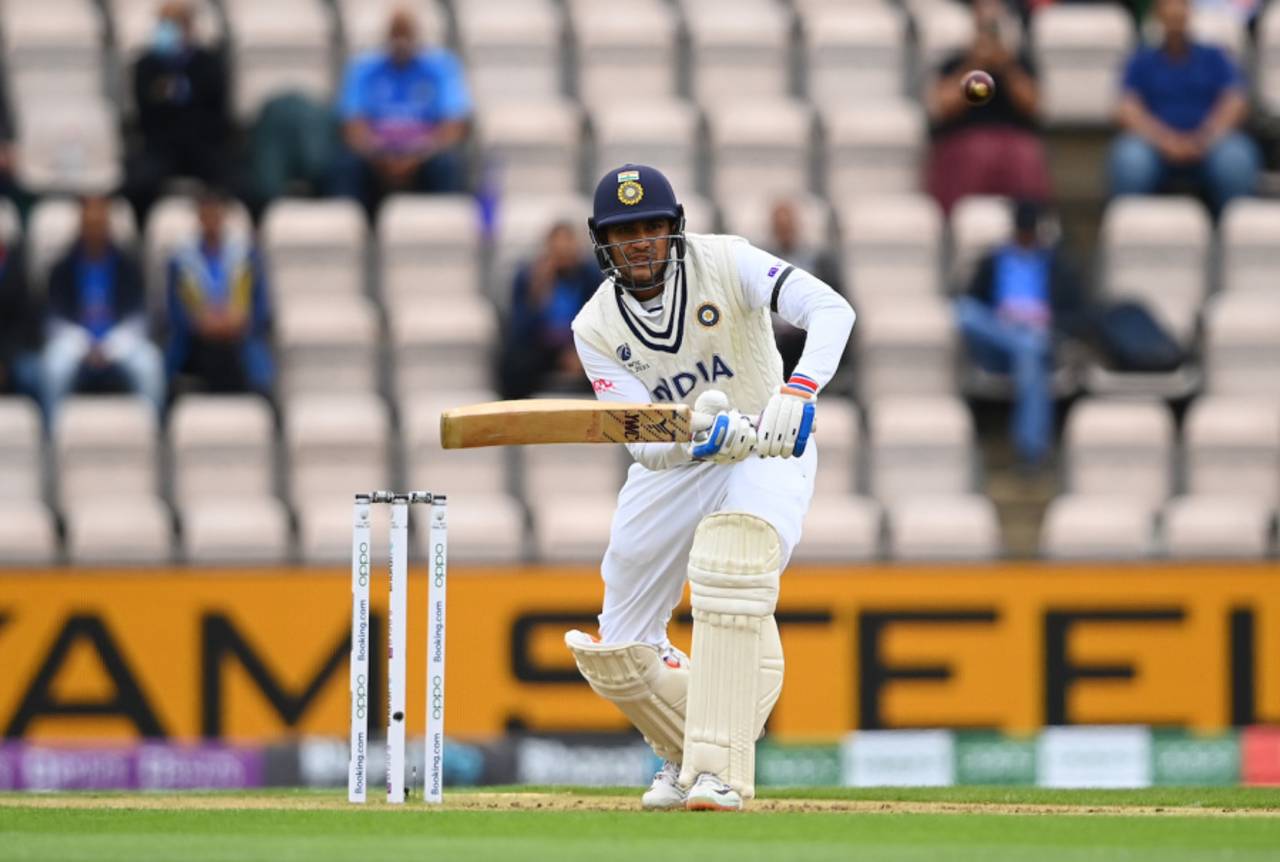In cricket, bowlers initiate the action and batters literally react to what is thrown at them.
Taking guard is an important part of a batter's preparation for facing what comes at them.
The literal meaning of taking guard is to mark where you'd like to stand in relation to the stumps. It's the first act performed by a batter when they arrive at the crease - akin to putting on armour while preparing for a duel.
What's the right guard for you? You have a few options to choose from.
You could take leg-stump guard, two legs (the area between the middle and leg stumps), middle stump, or off-stump guard.
A lot of batters in the Indian subcontinent prefer either the leg-stump or two-legs guard because of the conditions. In this part of the world, the bounce is invariably low and the batter looks first to prevent the two most viable modes of dismissal - leg-before and bowled. By standing on leg stump, you try to keep the front leg out of the way and allow the bat free access to the path of the ball.
Apart from players who are brought up on low-bounce pitches, batters who prefer scoring through the off side also like to take leg-stump guard because it opens up the off side a little more for them.
The ones who play on more bouncy pitches than those in Asia are likely to choose middle guard a lot more. The extra bounce leads to fewer leg-before dismissals but a lot more caught-behind dismissals and you don't want to stay too far inside the line on such surfaces. Batters who prefer to score on both sides of the pitch also tend to take middle-stump guard.
It's not often that batters prefer to take off-stump guard because that does make them a little more susceptible to getting rapped on the pads in front of the stumps. But when you want to counter a bowling line that is really far outside off, or want to take the front foot far across against the off-stump bowling line, you choose that option. Say, when you're playing on a rank turner against an offspinner and you want to emphatically go across; or when a left-hand batter is up against a right-arm quick bowler who is bowling wide of the crease from around the wicket. Still, off-stump guard is never usually the go-to option for any batter under normal circumstances.
While the guard preferences of different batters is shaped by how they play and where they have played in their formative years, your trigger movement could dictate what guard you choose. If your initial movement is back and across, or simply across, you really don't want to stand on the middle stump to begin with, for the trigger movement will put you on the off stump. If you merely have a forward press, you could choose any option you deem fit, except, of course, off-stump guard.
I said earlier that bowlers initiate the action and batters react, but batters do find ways to influence bowlers' plans too. Instead of standing at the popping crease, some batters will stand a foot or two outside. The idea is to reduce how much the ball swings in the air by forcing the bowler to shorten their length; the longer the ball stays in the air, the better its chances to swing.
We see Virat Kohli do this regularly. He stands outside the crease and follows it up with a long forward stride, which forces swing bowlers to rearrange their tactics. In the World Test Championship final, Shubman Gill went a step further by walking out of his crease in the first session of play on the first day. He wasn't looking to step down the pitch and smash it - far from it - for he was still playing defensive shots close to his body even after stepping out.
In these cases, bowlers tend to bowl closer to the moving target. Rarely do you find bowlers persisting with a typical outside-off line against a batter adopting the kind of plan that Gill employed. That way, as a batter, while you're still reacting to the ball that's bowled to you, you wrest some amount of control away when it comes to expected lengths and lines.
This strategy has flaws - for the moving body means a moving head, which in turn blurs your judgement of lines. Also, you compromise on your back-foot play and on optimum use of the sizeable box area, which hampers you in the long term.
Former India opener Aakash Chopra is the author of three books, the latest of which is The Insider: Decoding the craft of cricket. @cricketaakash
